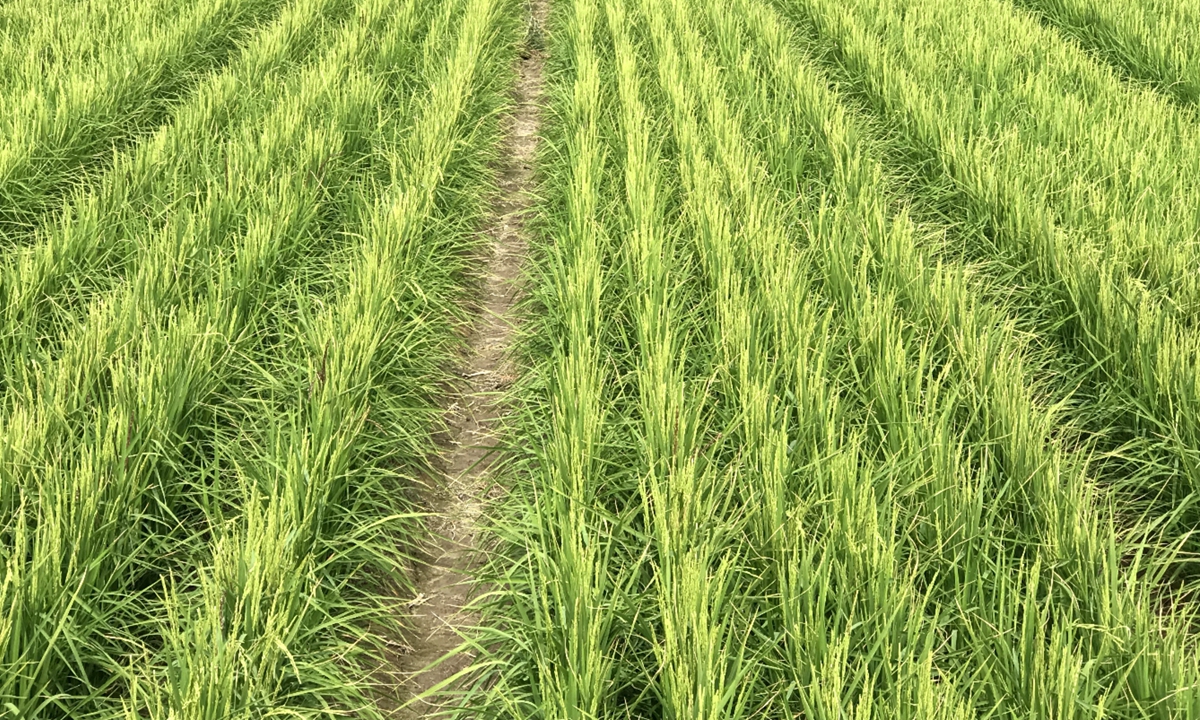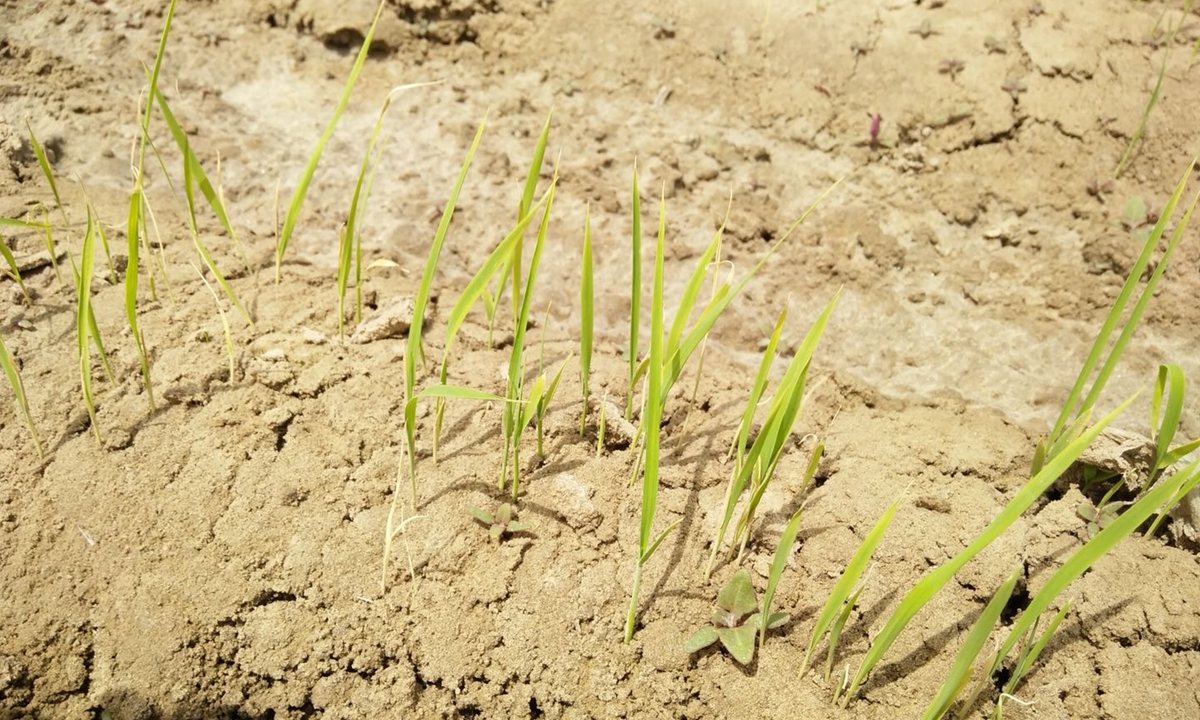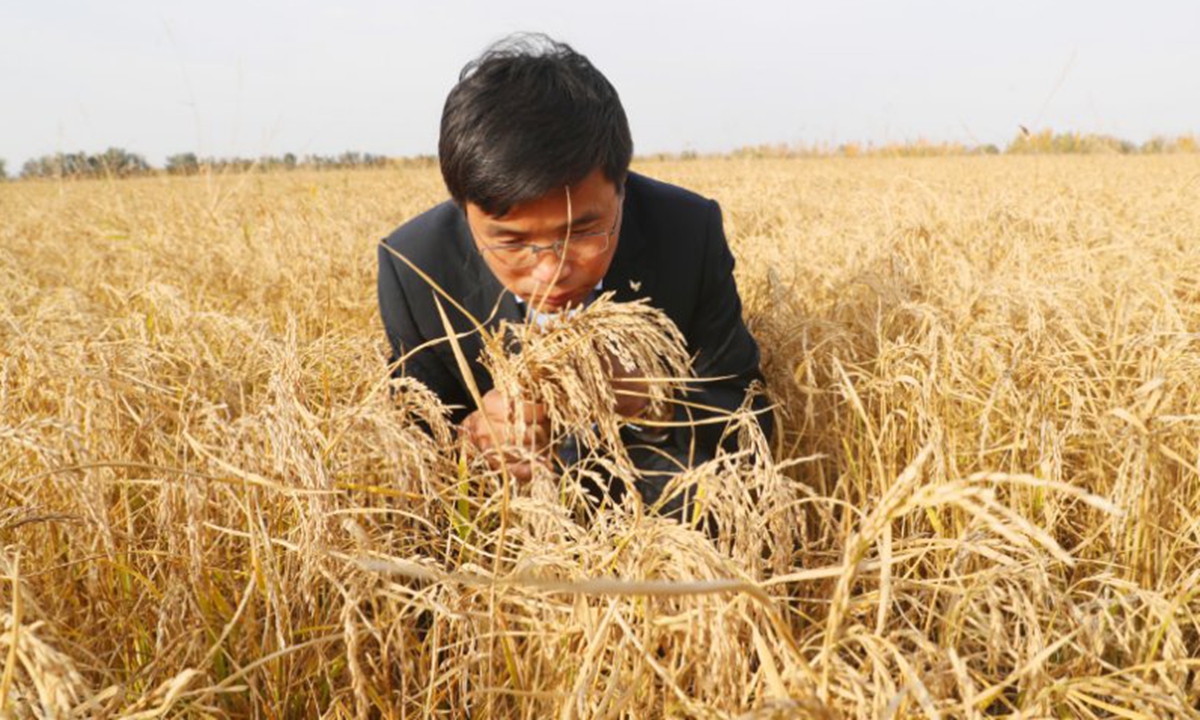Dry rice cultivated from 7,000-year-old 'weed' may mitigate global food crisis
By Li Lei Source:Global Times Published: 2020/7/2 17:28:40

Upland rice grown in a desert in Karamay city of Northwest China's Xinjiang Uygur Autonomous Region Photo: Courtesy of Peng Guowei
A 7,000-year-old crop variety discovered in China has been turned into commercial crop that can be planted in desert, which has the potential to help solve food crisis in regions and countries with a dry climate.
Dry rice, also known as upland rice, has attracted attention of some African and Asian countries even during its trial planting period.
Some foreign countries including Kazakhstan, South Africa, Tanzania and Zambia have sent personnel to visit the plant's developers for the purpose of introducing dry rice planting technologies to their countries, Peng Guowei, the developer, told the Global Times.
As China's eighth biggest desert, Ulan Buh desert in North China's Inner Mongolia Autonomous Region is in an area of more than one million hectares. In June, some 347 hectares of the desert has been sowed with dry rice as experimental field.

Dry rice seedlings in an experimental field in a desert Photo: Courtesy of Peng Guowei
Different with regular rice that grows in paddy field, dry rice grows in normal land and yields rice with much less water needed.
Dry rice planted nowadays is from a variety that has existed in China for more than 7,000 years, which has been treated as weed until Peng, an agronomy professor, found it from a pile of weeds in the Loess Plateau in Northwest China's Shaanxi Province in 2011.
After improving the variety by combining molecular breeding with hybrid breeding, the wild dry rice improved much in taste and yield.
In 2015, Peng started a dry rice planting trial in a desert in Karamay city of Northwest China's Xinjiang Uygur Autonomous Region.
Unlike regular rice, dry rice can be planted directly with a planter without seedling transplantation, which saves both time and labor.
The new varieties are indistinguishable with regular rice growing in wet field, while it only consumes one fourth of water that regular rice needs. "One mu of dry rice consumes 350 cubic meters of water, while regular rice needs 1,200 cubic meters," he said.
Huge potential
At the lab in Karamay, Peng and his team bred seeds for different regions and climates.
"It can be planted across the country from South China's Hainan Province to Northeast China's Heilongjiang Province, and will play a role in rural revitalization and poverty eradication," Peng told the Global Times.

Peng Guowei counts grain numbers of dry rice spikes by a field. Photo: Courtesy of Peng Guowei
"Compared with traditional crops such as corn and soy bean, one mu of dry rice will bring farmers more than 1,200 yuan ($172) in income," he said.
In addition to its grains, dry rice stalk also brings economic benefit to herdsman and farmers. "Dry rice stalks contain equal nutrition with corn stalks, and stalks of one mu dry rice are able to support five sheep for four months, which is a tidy income for farmers," Peng introduced.
Dry rice has been in trial plantation in 16 provincial regions in China that represent various altitudes, landforms and climates, among them, 1,000 hectares are in desert in Inner Mongolia, and 100 hectares in Xinjiang.
He said he would like to see dry rice and its planting technology to be spread to other countries that suffer from food shortage once the project is approved by the government as it will not only mitigate food shortage in these countries, but also save water resources.
RELATED ARTICLES:
Posted in: IN-DEPTH